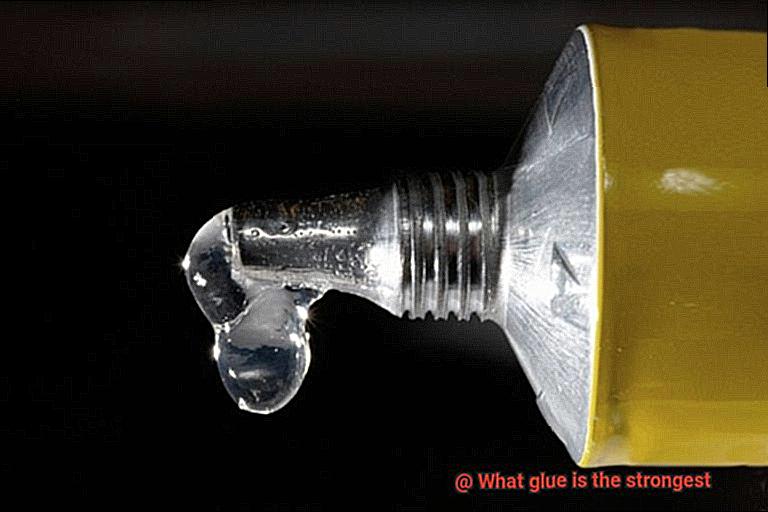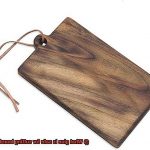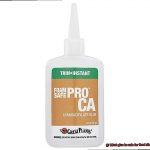Are you tired of getting stuck in sticky situations without a glue that can hold up to the toughest challenges?
Whether you’re a DIY enthusiast, a craft lover, or just someone who appreciates the power of sticking things together, finding the strongest glue is a must. But with so many options out there promising superior strength, it’s easy to get overwhelmed.
Don’t worry though. In this blog post, we’re going to dive headfirst into the fascinating world of glues and uncover which ones truly deserve the title of “strongest.”
Stick around as we explore the captivating world of the strongest glues.
What Determines Glue Strength?
Contents
Glue strength is a critical factor in ensuring the durability and longevity of bonded materials. From DIY projects to industrial applications, understanding the factors that determine glue strength is essential. In this article, we will delve into the various elements that influence the effectiveness of a glue bond, providing you with valuable insights to make informed decisions for your projects.
Type of Adhesive:
Different adhesives offer varying levels of strength. Epoxy adhesives are renowned for their exceptional bonding capabilities, making them ideal for heavy-duty applications such as metal or glass bonding. Super glues (cyanoacrylates), on the other hand, are famous for their instant bonding properties, creating strong bonds on a wide range of materials.
Bonding Surface:
A clean and smooth surface is vital for a strong bond. Debris, grease, or uneven surfaces can hinder adhesive contact, compromising bond strength. For optimal results, ensure surfaces are free from contaminants and properly prepared before applying the adhesive.
Application Method:
Consistent and even application of adhesive on both surfaces is crucial for a strong bond. Following the manufacturer’s instructions regarding curing time and pressure is also essential. Properly applied pressure during curing ensures intimate contact between the adhesive and surfaces, enhancing bond strength.
Temperature and Humidity Conditions:
Adhesive performance can be impacted by temperature and humidity conditions. Extreme temperatures or high humidity levels can weaken the bond or affect the curing process. Some adhesives require specific temperature ranges for optimal performance. Consider these factors when choosing an adhesive for your project.
Specific Project Requirements:
Different glues excel in different applications. Consider the specific requirements of your project, such as materials being bonded or environmental factors like moisture or temperature changes. This will help you select an adhesive that best suits your needs.
Testing Methods:
Various testing methods, such as shear or peel testing, can measure the strength of adhesives under different conditions and forces. These tests provide valuable data on adhesive performance and help ensure the selected glue meets your project’s requirements.
Quality and Age of Adhesive:
The quality and age of the adhesive can impact its strength. Expired or improperly stored adhesives may lose their effectiveness over time. It is crucial to use fresh, high-quality adhesives to maximize bond strength.
Additives or Reinforcements:
Certain additives or reinforcements can enhance adhesive strength. For example, adding glass fibers to epoxy adhesive can increase mechanical properties and overall strength. Consider these options when working on projects that require extra reinforcement.
Types of Glue and Their Strengths
Glue may seem like a simple thing, but it holds immense power when it comes to bonding materials together. Whether you’re working on a school project or fixing something at home, choosing the right glue can make all the difference. In this article, we will explore the different types of glue available in the market and uncover their strengths. So let’s dive in and discover the world of glue.
Super Glue – Instant Bond, Unbreakable Connection:
When it comes to quick fixes, super glue is your go-to adhesive. With its rapid drying time and strong bond, it can securely join various materials like metal, plastic, wood, and ceramics. Just a small drop of this mighty adhesive can create an unbreakable connection in seconds.
Epoxy Glue – A Reliable Companion for Tough Jobs:
When strength and durability are paramount, epoxy glue comes to the rescue. Composed of two components that need to be mixed before use, epoxy creates a resilient bond that can withstand heavy loads and extreme conditions. It’s a popular choice for construction projects and automotive repairs.
Wood Glue – Uniting Nature’s Warriors:
Woodworking enthusiasts, rejoice. Wood glue is tailor-made for bonding wood pieces together. White glue, also known as PVA glue, is perfect for general woodworking projects. If you’re looking for something stronger, yellow glue or aliphatic resin glue offers superior bonding strength for joinery work. For irregularly shaped pieces or gap-filling needs, polyurethane glue expands as it cures, ensuring a firm hold.
Fabric/Craft Adhesive – Gentle Yet Reliable:
For delicate projects involving fabrics or lightweight materials, fabric or craft adhesive is the way to go. These water-based adhesives provide flexibility and a gentle bond that allows some movement. While they may not be as strong as other glues, they are perfect for crafts, scrapbooking, and non-load-bearing applications.
Specialty Glues – Tailored Solutions for Unique Challenges:
Sometimes, specific projects require specialized glues. Heat-resistant glues can endure high temperatures in automotive or industrial applications. Waterproof glues are designed to brave the elements in outdoor projects or areas exposed to moisture. Contact cement, hot glue, and fabric glue serve specific purposes, making them essential tools for specific crafts or repairs.
Epoxy Glue
Imagine you’re knee-deep in a DIY project, and you need a glue that can withstand anything. Enter epoxy glue, the undisputed superhero of bonding. With its incredible strength and versatility, epoxy glue swoops in to save the day in any situation. In this article, we will explore the key advantages and considerations of using epoxy glue, so you can tap into its power for your next project.
Advantage 1: Unbeatable Strength
Epoxy glue is like the Hulk of adhesives. Thanks to its unique two-component formula, it creates a bond that can withstand intense pressure and stress. Whether you’re fixing a broken household item or bonding industrial components, epoxy glue ensures a rock-solid connection that won’t let you down.
Advantage 2: Versatility at its Finest
Epoxy glue is the MacGyver of adhesives – it can bond almost anything. From metal and wood to glass, ceramics, and plastics, there’s no material too tough for epoxy glue. So whether you’re tackling a craft project or repairing an essential item, rest assured that epoxy glue has got your back with its reliable and versatile bonding capabilities.
Advantage 3: Water and Chemical Resistance
Epoxy glue is like Aquaman, but for adhesives. Once cured, it becomes highly resistant to water, solvents, and other harsh substances. Whether your project is indoors or outdoors, epoxy glue stands strong against the elements, making it ideal for both everyday repairs and outdoor applications.
Advantage 4: Gap-Filling Magic
Consideration 1: Proper Surface Preparation
To unlock the full potential of epoxy glue, proper surface preparation is key. Clean, dry, and grease-free surfaces are essential for achieving the strongest bond possible. Some epoxy glues may even require a little roughening up through sanding or roughening techniques to enhance adhesion. Remember, a small investment in surface preparation goes a long way in maximizing the strength of your bond.
Consideration 2: Follow Instructions for Optimal Results
To harness the full power of epoxy glue, it’s crucial to follow the manufacturer’s instructions. Pay close attention to the mixing ratio between the resin and hardener, as an incorrect ratio can affect the strength of the bond. Additionally, epoxy glue typically requires curing time to reach its maximum strength. Be patient and allow adequate time for curing, as this will ensure a bond that can withstand anything.
Super Glue
In the vast realm of adhesives, one product reigns supreme – Super Glue. This extraordinary adhesive, also known as cyanoacrylate adhesive, has achieved legendary status for its unparalleled strength and rapid bonding capabilities.
What sets Super Glue apart from its counterparts? Let’s delve into its properties and applications to understand its true power.
First and foremost, Super Glue boasts exceptional strength. It forms an unyielding bond between a wide range of materials, including metal, plastic, rubber, ceramic, and even wood. This means that whether you need to mend a shattered porcelain mug handle or repair a torn shoe sole, Super Glue often serves as the ultimate savior. Its bond endures the test of time, ensuring lasting results.
Another remarkable attribute of Super Glue is its lightning-fast curing ability. While ordinary glues require clamping or lengthy drying periods, Super Glue dries in mere seconds. This means that once you apply the adhesive, you can immediately resume using the repaired item. No more waiting around for hours on end – with Super Glue, you can swiftly get back to enjoying your restored belongings.
However, it’s essential to acknowledge that while Super Glue excels in many scenarios, it does have its limitations. For instance, if you’re working with bulky or weighty objects that necessitate substantial load-bearing capabilities, epoxy or structural adhesives may prove more suitable alternatives.
In conclusion, Super Glue stands tall as the superhero of adhesives. Its unmatched strength and rapid bonding properties make it an ideal choice for everyday repairs and projects. Whether you’re mending a cherished trinket or embarking on a DIY endeavor, Super Glue saves the day. Nevertheless, remember to select the appropriate adhesive for each specific application, as even superheroes have their boundaries.
Construction Adhesive
In the world of construction, finding the perfect adhesive is the key to success. Enter construction adhesive, the superhero of glues designed to tackle heavy-duty tasks with ease. In this article, we will explore the incredible advantages of using construction adhesive and why it should be your go-to choice for all your construction needs.
Unbeatable Bonding Power:
Construction adhesive boasts an unparalleled strength that can withstand significant weight and pressure. Say goodbye to disappointments with traditional glue and say hello to a bond that holds strong, providing you with peace of mind when securing heavy objects to walls or keeping large wood pieces intact.
Versatility at its Finest:
One of the greatest advantages of construction adhesive is its ability to bond a wide variety of materials together. Wood, metal, concrete, plastic – you name it, construction adhesive can handle it. No more juggling between different types of adhesives; this superhero glue can handle any material combination you throw its way.
Defying Mother Nature:
Construction projects sometimes demand adhesives that can brave the elements. Luckily, construction adhesive rises to the challenge. With excellent resistance to moisture and weathering, it can be used indoors and outdoors without compromising its performance. Rain or shine, extreme temperatures or humidity – your bond will remain unyielding and durable over time.
Easy Application:
Using construction adhesive is a breeze if you follow the manufacturer’s instructions. Apply the adhesive in the correct amount, allow sufficient drying time for the bond to cure fully, and clean the surfaces beforehand to remove any dirt or grease that could hinder adhesion. With these simple steps, you’ll achieve professional-grade results every time.
Polyurethane Glue
Today, we’re diving into the remarkable world of polyurethane glue, also known as PU glue. Prepare to unravel its secrets and discover how this glue works, its advantages, and a few important limitations to keep in mind.
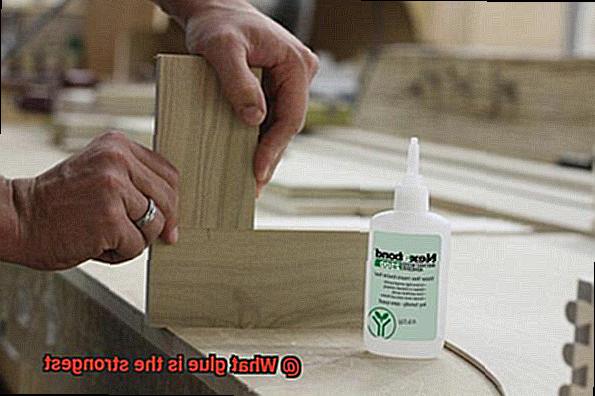
The Science Behind Polyurethane Glue:
Polyurethane glue is no ordinary adhesive – it’s a true powerhouse. When it encounters moisture, a magical chemical reaction occurs. This glue expands and foams, allowing it to effortlessly fill gaps and create an unbreakable bond. Unlike other glues that rely solely on mechanical strength, polyurethane glue chemically bonds with the materials it touches. That means it can resist water, heat, and even some solvents. Impressive, isn’t it?
Advantages of Polyurethane Glue:
- Versatility: Polyurethane glue is the ultimate team player. It can bond porous surfaces like wood, concrete, or fabric, as well as non-porous materials such as metal or plastic. Whatever you’re working on, this glue has got your back.
- Temperature Resistance: Don’t let extreme weather conditions ruin your project. Polyurethane glue can handle temperatures ranging from -40°F (-40°C) to 200°F (93°C). It’s time to take your crafting skills outdoors.
- Strength and Durability: Need a bond that can withstand serious stress? Look no further. Polyurethane glue creates a bond that can stand up to the toughest challenges. It’s perfect for heavy-duty projects or repairs.
Limitations to Keep in Mind:
- Curing Time: Patience is key with polyurethane glue. Unlike some other adhesives, it can take several hours to fully cure. So plan your project accordingly and give it the time it needs to work its magic.
- Expansion Hazards: While the foaming action of this glue is great for filling gaps, it can also cause some headaches. If you’re not careful and don’t apply enough pressure or use clamps during the curing process, the expanding glue might push parts apart. So make sure everything stays in place.
Structural Adhesive
Structural adhesive is the superhero of adhesives, designed specifically for bonding materials in structural applications. It is a powerful glue that has become the backbone of industries like automotive, aerospace, construction, and manufacturing. This adhesive sets itself apart with its incredible strength and durability, capable of bonding metals, plastics, composites, and even glass.
There are different types of structural adhesives to choose from, each with its own unique properties and applications. First on the list is epoxy adhesive. Renowned for its exceptional strength and resistance to chemicals, temperature extremes, and moisture, epoxy adhesives are the go-to choice for demanding applications in the aerospace and automotive industries.
Next is acrylic adhesive, striking the perfect balance between strength and flexibility. This adhesive is commonly used for bonding plastics and offers excellent resistance to weathering and UV radiation.
If extreme temperatures are a concern, look no further than polyurethane adhesive. Known for its strong bonding properties and flexibility, it is often used in construction applications where a durable yet flexible bond is required.
Last but not least is cyanoacrylate adhesive, also known as super glue. This adhesive provides instant bonding with excellent strength and is perfect for smaller scale applications.
When selecting a structural adhesive, consider factors such as the materials being bonded, required strength, temperature resistance, flexibility, and curing time. Following the manufacturer’s instructions for proper application and curing is essential for achieving the best results.
Choosing the Right Glue for Your Project
When embarking on a new project, choosing the right glue is crucial for achieving the desired results. The type of glue you select depends on the materials you’ll be bonding, as different glues work better with specific materials. In this article, we’ll explore the advantages and disadvantages of various glues and provide special considerations to help you make an informed decision.
Epoxy Glue:
- Advantages: Exceptional bonding strength and durability; suitable for metal, glass, wood, and plastic.
- Disadvantages: Longer curing time; may require mixing two components.
- Special Considerations: Follow recommended drying times for optimal strength.
Polyurethane Glue:
- Advantages: Strong bond; resistant to water and heat; works on porous and non-porous surfaces.
- Disadvantages: May expand while curing, requiring clamping.
- Special Considerations: Ideal for woodworking projects.
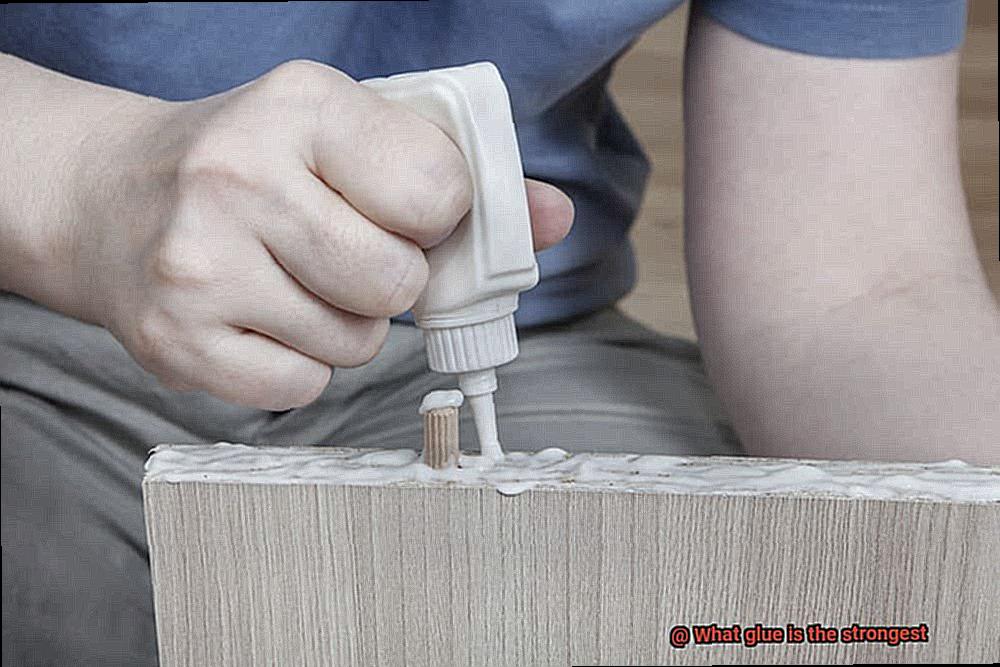
White Craft Glue/PVA Glue:
- Advantages: Strong bond on porous surfaces; dries clear.
- Disadvantages: Not suitable for non-porous surfaces.
- Special Considerations: Great for crafts and DIY projects involving fabric or paper.
Cyanoacrylate Glue (Super Glue):
- Advantages: Quick and secure bonding.
- Disadvantages: Not as strong in the long term.
- Special Considerations: Ideal for quick fixes; read instructions carefully.
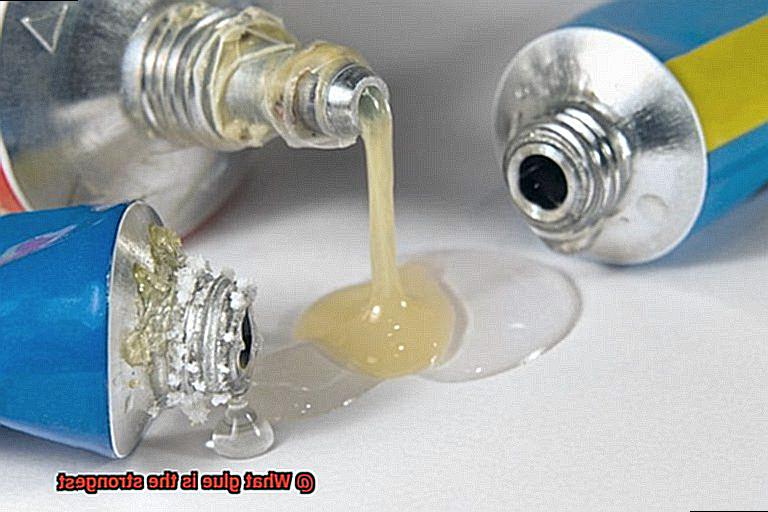
Clear-Drying Silicone Adhesive:
- Advantages: Strong bond; resistant to high temperatures and moisture.
- Disadvantages: May require longer curing time.
- Special Considerations: Recommended for ceramics and glass.
Remember these tips when selecting a glue:
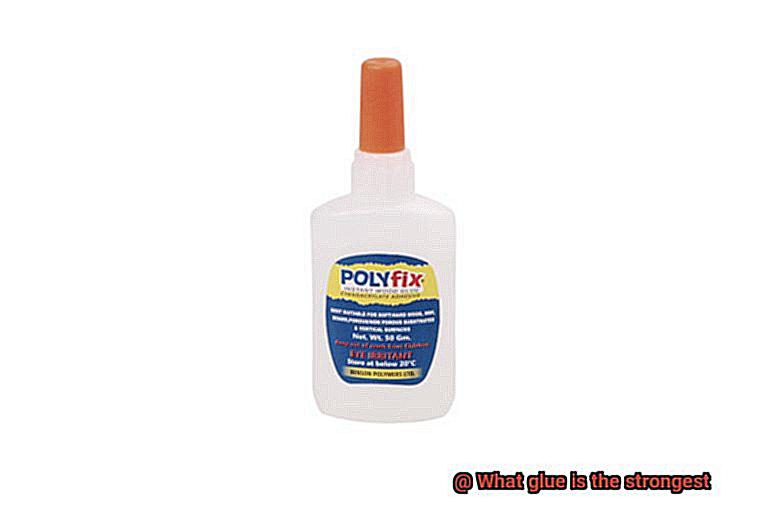
- Clean and prepare surfaces before applying glue for a strong bond.
- Seek expert advice from local hardware stores or online communities if unsure.
Enhancing the Strength of Any Glue Bond
Glue is a versatile and essential tool for DIY projects, ensuring a strong bond is crucial for long-lasting results. In this article, we’ll explore effective techniques to enhance the strength of any glue bond.
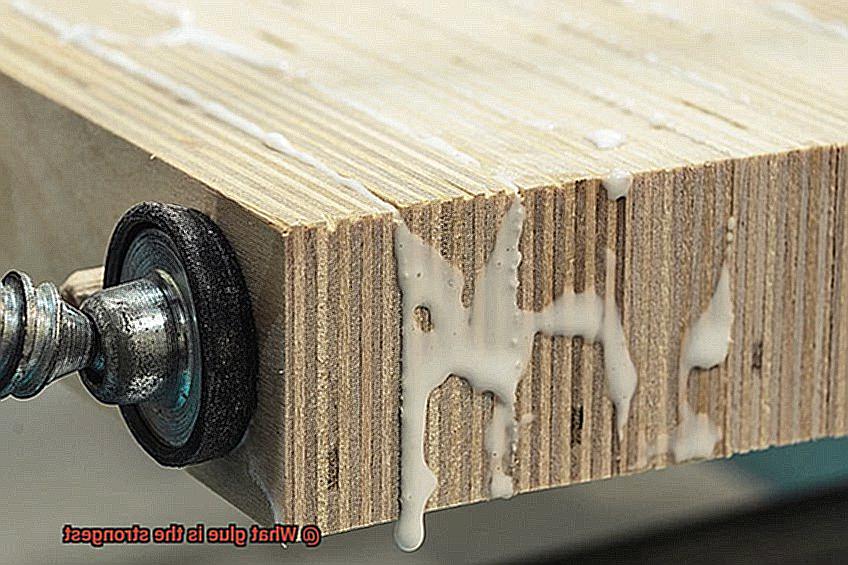
Surface Preparation:
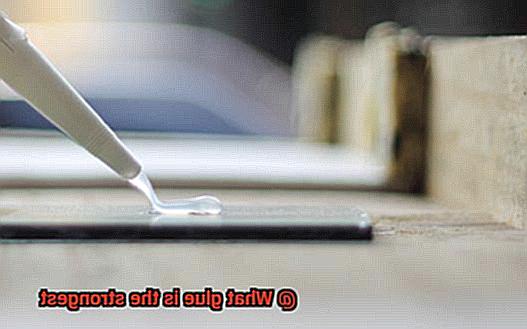
- Clean the surfaces thoroughly to remove dirt, dust, and grease.
- Ensure surfaces are dry for better adhesion.
Proper Adhesive Selection:
- Choose an adhesive that suits the materials being bonded.
- Epoxy glue is ideal for metals, while specialized wood glue works wonders on wooden surfaces.
Application Technique:
- Apply the adhesive evenly, following manufacturer’s instructions.
- Use the recommended amount; too much or too little weakens the bond.
Clamping or Pressure Application:
- Apply pressure or use clamps for uneven or irregular surfaces.
- Ensures adhesive makes full contact with both surfaces.
Curing Time:
- Allow sufficient time for proper curing.
- Rushing weakens the bond; follow manufacturer’s instructions.
Temperature and Humidity:
- Consider environmental conditions during bonding.
- Some adhesives require specific temperature and humidity levels.
Surface Roughening:
- Use sandpaper or abrasive materials to create a rough texture.
- Increases surface area, improving adhesion.
Joint Design:
- Joint design impacts bond strength.
- Overlapping joints or dovetail joints provide more surface area for stronger bonds.
Also Read: Super Glue – Glue Things
Conclusion
In the quest for the strongest glue, there are a multitude of options to consider. From super glues to epoxy adhesives, each type boasts its own set of strengths and weaknesses. However, when it comes to sheer bonding power, one glue stands head and shoulders above the rest: cyanoacrylate adhesive.
Cyanoacrylate adhesive, commonly known as super glue, is renowned for its incredible strength and rapid bonding capabilities. With just a few drops of this powerful adhesive, you can secure even the most stubborn materials together with unwavering tenacity.
But what makes cyanoacrylate adhesive so strong? It all comes down to its unique chemical composition. When exposed to moisture in the air or on surfaces, cyanoacrylate adhesive undergoes a process called polymerization. This causes the adhesive to harden quickly and form an incredibly strong bond that can withstand immense pressure and strain.
Unlike other glues that may take hours or even days to fully cure, cyanoacrylate adhesive sets in mere seconds. This means you can get on with your project without wasting precious time waiting for the glue to dry.
Furthermore, cyanoacrylate adhesive is versatile in its applications. Whether you’re working with wood, metal, plastic, ceramic, or even rubber, this remarkable glue can securely bond them all together.
However, it’s important to exercise caution when using cyanoacrylate adhesive due to its fast-acting nature. Make sure to read and follow the instructions carefully and use it in a well-ventilated area.
In conclusion, when it comes to finding the strongest glue for your projects, look no further than cyanoacrylate adhesive. Its exceptional strength and rapid bonding capabilities make it a force to be reckoned with in the world of adhesives.

